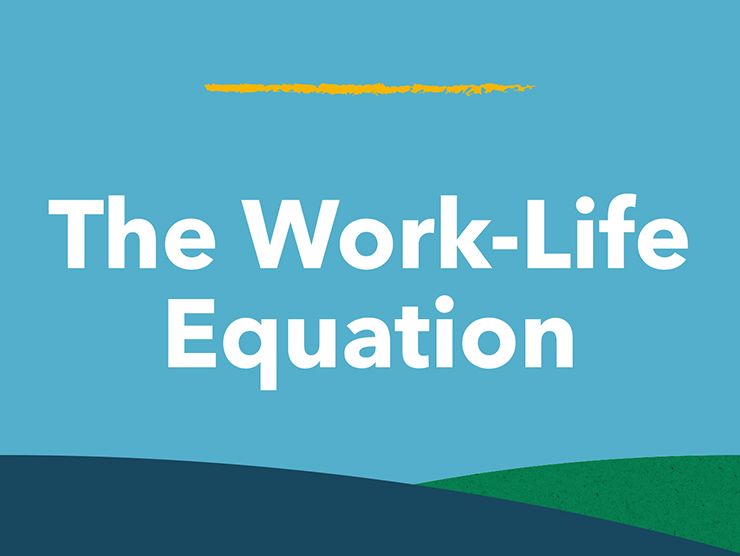It's Monday morning. You open your computer, navigate to your email, and start drinking your morning coffee. As you're reading, you realize you forgot to order more dog food - so you open a new tab and head over to Amazon. Then, mid-order, you realize you need to order a gift for your niece's birthday, so you start a search for new children's books. You now have three tabs open and probably haven't completed the task you originally set out to do - read your email. You probably also forgot to place the dog food order (again). And your coffee is cold.
In today's digital age, this scenario is pretty common. There's so much going on and so much available to us that we think we need to do everything at once. Many people love the idea of multitasking - who doesn't want to get a lot done at the same time? However, while it might seem like a good idea, research has shown that multitasking actually decreases productivity... and our brains simply aren't built for it.
As an employer, you need to think about your employees. Do they have too much on their plates to focus on one thing at a time? What are they bringing to work, in the back of their minds, that they haven't yet had time to do? There's a pretty good chance they're multitasking throughout the day, and it's killing their productivity... and your bottom line.
On the other hand, some of your employees might work from home. If they're caring for a young child at home while simultaneously trying to complete a report, chances are, there are many different distractions flying around (perhaps literally!). This becomes detrimental to your employee's focus and, consequently, productivity and quality of work.
1. Set an example. If your employees see you doing five things at once, they'll likely try to do the same. So instead of answering emails throughout a meeting, close your computer and give the meeting topic and attendees your full attention. The same even goes for working through lunch - let your employees see you take a break.
2. If your line of work allows, don't set an expectation for immediate email replies. Email is a big attention-grabber, and constant notifications - or simply having the window open all the time - distract people from their work. Encourage employees to check email a couple times per day, instead of doing so constantly, and set a time frame for replies - within 24 hours instead of a couple minutes, for example.
3. Establish flexibility. If employees need to call their doctor or child's school, encourage them to take a 15-minute break, step outside, and make the call - their full attention will be on the call, and once they come back to their desk, their full attention will be back on work. Likewise, instead of having employees spending the work day worrying about finding time to get their driver's license renewed or go to a parent/teacher conference, allow for adjustable hours. When employees know they can come in a couple hours early to leave a couple hours early, or take a longer lunch break and make up for it later in the week, it makes a huge difference.
4. Provide options. Your employees might have young children to care for, or might be caring for their elderly parents. Consider sponsoring dependent care. For employees who work from home but also have children or parents to care for during the day, this type of care will allow them to focus fully on work. For in-office employees, it will provide peace of mind - they won't have to worry about staying home from work or finding last minute care when their babysitter is sick.
5. Give employees the appropriate amount of time and resources to do their work well. Often, when people feel like they need to multitask, it's due to lack of time. Ensure deadlines are realistic and employees have everything they need, including support from you and their colleagues, to meet them.
The bottom line: multitasking is a bad habit. By helping your employees break it, you'll actually improve quality of work and increase their productivity.
In today's digital age, this scenario is pretty common. There's so much going on and so much available to us that we think we need to do everything at once. Many people love the idea of multitasking - who doesn't want to get a lot done at the same time? However, while it might seem like a good idea, research has shown that multitasking actually decreases productivity... and our brains simply aren't built for it.
As an employer, you need to think about your employees. Do they have too much on their plates to focus on one thing at a time? What are they bringing to work, in the back of their minds, that they haven't yet had time to do? There's a pretty good chance they're multitasking throughout the day, and it's killing their productivity... and your bottom line.
The Brain Chemistry Behind Multitasking
The word "multitasking" is a misnomer - it actually means switching between tasks very rapidly, not doing them at the same time. While switching between tasks happens quickly, it's the brain power it takes to divert attention away from something and move between tasks that's taxing. When the brain is quickly shifting gears, the result is an increase in cortisol production, the hormone that causes a rise in stress - not great for your workforce. On the flip side, the brain actually encourages switching between small tasks that are easy to accomplish quickly by releasing dopamine, a hormone that elicits a feeling of reward. This then pushes people to continue switching between small tasks to receive instant gratification. Talk about mixed signals!Multitasking is Especially Tempting for Parents
Everyone's busy, but multitasking can be especially tempting for working parents. Many become burned out, trying to shoulder work and life responsibilities at the same time. In fact, 61% of working parents don't feel supported to attend a child's event, such as a recital, soccer game, etc. In this case, an employee might decide to take a work call or participate in a work meeting via phone while sitting at her son's soccer game - but doing both at the same time will take some of her attention away from each task.On the other hand, some of your employees might work from home. If they're caring for a young child at home while simultaneously trying to complete a report, chances are, there are many different distractions flying around (perhaps literally!). This becomes detrimental to your employee's focus and, consequently, productivity and quality of work.
What Can You Do?
The idea of a workforce made up of quick multitaskers is attractive, but it'll cost you. There are five things you can do to help discourage a culture of multitasking:1. Set an example. If your employees see you doing five things at once, they'll likely try to do the same. So instead of answering emails throughout a meeting, close your computer and give the meeting topic and attendees your full attention. The same even goes for working through lunch - let your employees see you take a break.
2. If your line of work allows, don't set an expectation for immediate email replies. Email is a big attention-grabber, and constant notifications - or simply having the window open all the time - distract people from their work. Encourage employees to check email a couple times per day, instead of doing so constantly, and set a time frame for replies - within 24 hours instead of a couple minutes, for example.
3. Establish flexibility. If employees need to call their doctor or child's school, encourage them to take a 15-minute break, step outside, and make the call - their full attention will be on the call, and once they come back to their desk, their full attention will be back on work. Likewise, instead of having employees spending the work day worrying about finding time to get their driver's license renewed or go to a parent/teacher conference, allow for adjustable hours. When employees know they can come in a couple hours early to leave a couple hours early, or take a longer lunch break and make up for it later in the week, it makes a huge difference.
4. Provide options. Your employees might have young children to care for, or might be caring for their elderly parents. Consider sponsoring dependent care. For employees who work from home but also have children or parents to care for during the day, this type of care will allow them to focus fully on work. For in-office employees, it will provide peace of mind - they won't have to worry about staying home from work or finding last minute care when their babysitter is sick.
5. Give employees the appropriate amount of time and resources to do their work well. Often, when people feel like they need to multitask, it's due to lack of time. Ensure deadlines are realistic and employees have everything they need, including support from you and their colleagues, to meet them.
The bottom line: multitasking is a bad habit. By helping your employees break it, you'll actually improve quality of work and increase their productivity.





